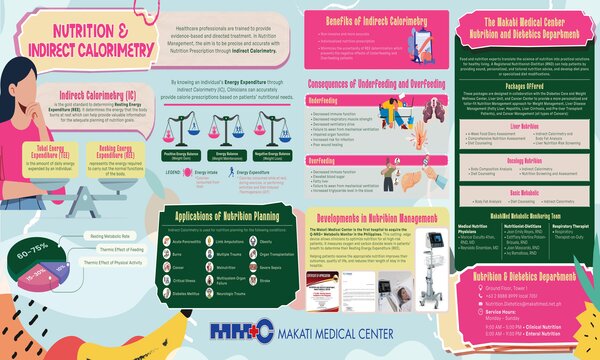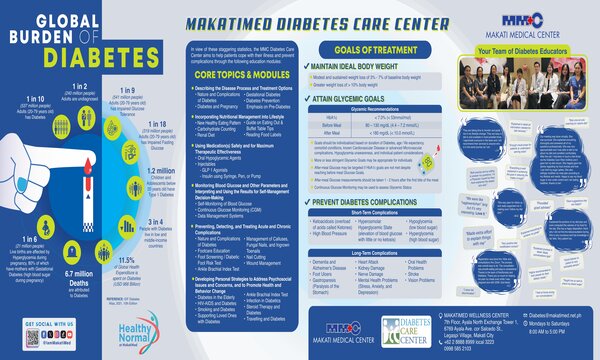Suicide affects people from all walks of life. The World Health Organization (WHO) estimates that about one million people from around the world die of suicide every year, which means there is one life lost every 40 seconds.
In the Philippines, the WHO reported that the suicide rate among Filipino males increased from 4.5 to 5.2 and rose from 1.8 to 2.3 among females, based on the 2000 to 2016 data.
While people are increasingly becoming more aware and vocal about mental health in recent years, society still paints the victim as the suspect when it comes to suicide. Case in point: using the term “commit suicide” as if it is a crime.
Suicide is a growing problem and a major public health issue that should not be ignored just because the warning signs are not physically there. It is crucial to understand the reality of suicide—why it happens and how to provide support for those who are at risk.
In the Philippines, the WHO reported that the suicide rate among Filipino males increased from 4.5 to 5.2 and rose from 1.8 to 2.3 among females, based on the 2000 to 2016 data.
While people are increasingly becoming more aware and vocal about mental health in recent years, society still paints the victim as the suspect when it comes to suicide. Case in point: using the term “commit suicide” as if it is a crime.
Suicide is a growing problem and a major public health issue that should not be ignored just because the warning signs are not physically there. It is crucial to understand the reality of suicide—why it happens and how to provide support for those who are at risk.
Understanding Suicide
There is no clear and concrete answer as to what pushes people to end their lives. However, it may stem from various reasons and factors, such as post-traumatic stress, financial distress, mental health problems like depression, and substance abuse or addiction.
Depression, anxiety disorders, schizophrenia, bipolar disorder, and substance abuse disorders are correlated with an increased risk for suicidal behavior. Of course, not everyone who is diagnosed with a mental health disorder is suicidal, but when other factors are present, the risk is higher.
People who die by suicide often experience despair and suffering. When it becomes unbearable, ending their lives seems the only option left to relieve them of their pain. It’s less about wanting to die and more about wanting to put an end to their suffering.
Depression, anxiety disorders, schizophrenia, bipolar disorder, and substance abuse disorders are correlated with an increased risk for suicidal behavior. Of course, not everyone who is diagnosed with a mental health disorder is suicidal, but when other factors are present, the risk is higher.
People who die by suicide often experience despair and suffering. When it becomes unbearable, ending their lives seems the only option left to relieve them of their pain. It’s less about wanting to die and more about wanting to put an end to their suffering.
Myths vs. Facts
Let’s examine the harmful attitudes and beliefs that may be contributing to the stigma around suicide, and dispel each one with the truth.
Myth: Someone who appears to be happy and seems to have his/her act together is not at risk of committing suicide.
Fact: Someone can look as if they have everything together and are completely fine on the outside, but feel the complete opposite inside. There are many examples of high-profile celebrities and prominent figures who seem happy or have everything they need or want, but still unfortunately died by suicide.
Some people hide their emotional pain or suffering from others. In fact, “smiling depression” is the term for depressed individuals who appear perfectly fine outside.
Myth: People who died by suicide refused to seek help.
Fact: A lot of individuals who contemplate and die by suicide get help before attempting the act. Studies of suicide victims reveal that over half of them sought medical assistance within six (6) months before taking their lives.
Myth: People who die by suicide are cowards and weak-willed.
Fact: Not true. They are courageous and strong. They are fighters who fought their own battles for months or years. Sadly, they can only fight for so long, especially when they are on their last string of hope. Know that they are going through difficult situations and may be experiencing mental health symptoms like depression.
Myth: There is nothing you can do to stop someone from attempting suicide.
Fact: Getting the right kind of support, especially during a difficult time, is crucial to saving a suicidal person’s life. When someone talks about contemplating suicide or is undergoing severe depression, anxiety, and despair, the best thing to do is stay in touch with them. You can also get rid of any lethal items they have access to, ask what you can do to help, and listen to them.
Myth: Talking about suicide will only encourage it.
Fact: Because of this widespread misbelief, many people are afraid to speak about suicide. But talking about it is the key to eliminating the stigma.
More importantly, it encourages people—those who experience suicide ideation, attempted suicide, families who have lost a loved one to suicide, and advocates—to share their story and defy misconceptions. This also encourages individuals to seek medical help.
Myth: Only people who have mental health conditions attempt suicide.
Fact: While mental health disorders are associated with increased risk, not all individuals who attempt or die by suicide have a mental illness. Suicidal thoughts may be caused by various life crises such as rejection, death of a family member, abuse, trauma, financial problems, and declining health.
Myth: Suicides happen without warning.
Fact: Most suicidal people demonstrate visible warning signs before an attempt. Some early warning signs include loss of interest in activities they were passionate about, increasing alcohol and drug abuse, crying, isolating themselves from friends or loved ones, inability to sleep or oversleeping, drastic changes in mood, and losing their sense of purpose in life.
Late warning signs, meanwhile, are threatening to hurt or kill themselves and talking or writing about death and suicide.
Myth: Suicidal people are determined to die.
Fact: People who attempt and contemplate suicide go through an overwhelming sense of misery that they just want it to stop. They often feel alone, helpless, and think that they are a burden to others. This is where emotional support is crucial—having someone to talk to and listen to their problems can change their mind.
Myth: Someone who appears to be happy and seems to have his/her act together is not at risk of committing suicide.
Fact: Someone can look as if they have everything together and are completely fine on the outside, but feel the complete opposite inside. There are many examples of high-profile celebrities and prominent figures who seem happy or have everything they need or want, but still unfortunately died by suicide.
Some people hide their emotional pain or suffering from others. In fact, “smiling depression” is the term for depressed individuals who appear perfectly fine outside.
Myth: People who died by suicide refused to seek help.
Fact: A lot of individuals who contemplate and die by suicide get help before attempting the act. Studies of suicide victims reveal that over half of them sought medical assistance within six (6) months before taking their lives.
Myth: People who die by suicide are cowards and weak-willed.
Fact: Not true. They are courageous and strong. They are fighters who fought their own battles for months or years. Sadly, they can only fight for so long, especially when they are on their last string of hope. Know that they are going through difficult situations and may be experiencing mental health symptoms like depression.
Myth: There is nothing you can do to stop someone from attempting suicide.
Fact: Getting the right kind of support, especially during a difficult time, is crucial to saving a suicidal person’s life. When someone talks about contemplating suicide or is undergoing severe depression, anxiety, and despair, the best thing to do is stay in touch with them. You can also get rid of any lethal items they have access to, ask what you can do to help, and listen to them.
Myth: Talking about suicide will only encourage it.
Fact: Because of this widespread misbelief, many people are afraid to speak about suicide. But talking about it is the key to eliminating the stigma.
More importantly, it encourages people—those who experience suicide ideation, attempted suicide, families who have lost a loved one to suicide, and advocates—to share their story and defy misconceptions. This also encourages individuals to seek medical help.
Myth: Only people who have mental health conditions attempt suicide.
Fact: While mental health disorders are associated with increased risk, not all individuals who attempt or die by suicide have a mental illness. Suicidal thoughts may be caused by various life crises such as rejection, death of a family member, abuse, trauma, financial problems, and declining health.
Myth: Suicides happen without warning.
Fact: Most suicidal people demonstrate visible warning signs before an attempt. Some early warning signs include loss of interest in activities they were passionate about, increasing alcohol and drug abuse, crying, isolating themselves from friends or loved ones, inability to sleep or oversleeping, drastic changes in mood, and losing their sense of purpose in life.
Late warning signs, meanwhile, are threatening to hurt or kill themselves and talking or writing about death and suicide.
Myth: Suicidal people are determined to die.
Fact: People who attempt and contemplate suicide go through an overwhelming sense of misery that they just want it to stop. They often feel alone, helpless, and think that they are a burden to others. This is where emotional support is crucial—having someone to talk to and listen to their problems can change their mind.
Reach Out to Those Who Cry for Help
Individuals who have thought of, attempted, and died by suicide come from a place of deep pain that perhaps no one else can understand. Here’s an excerpt from David Foster Wallace’s book Infinite Jest, where he wrote a powerful analogy (a person trapped in a burning building) on understanding suicide.
“Make no mistake about people who leap from burning windows. Their terror of falling from a great height is still just as great as it would be for you or me standing speculatively at the same window just checking out the view; i.e. the fear of falling remains a constant. The variable here is the other terror, the fire’s flames: when the flames get close enough, falling to death becomes the slightly less terrible of two terrors.”
If you or someone you know is feeling hopeless or in need of treatment for depression or other mental health issues, reach out to Makati Medical Center. Know that you are not alone, and help is available. Our trained professionals are always ready to listen. You can also reach out to various organizations that are capable of providing assistance:
MakatiMed Neuropsychiatry
+632 8888 8999 locals 2021 to 2022
National Center Mental Health Crisis Hotline:
0917-899-8727
Manila Lifeline Center
(02) 8969191
0917 854 9191
Hopeline PH
@HopelinePH
(02) 804-4673
0917 558 4673
The National Center for Mental Health Crisis Hotline
(02) 989-8727
(0917) 899-8727
“Make no mistake about people who leap from burning windows. Their terror of falling from a great height is still just as great as it would be for you or me standing speculatively at the same window just checking out the view; i.e. the fear of falling remains a constant. The variable here is the other terror, the fire’s flames: when the flames get close enough, falling to death becomes the slightly less terrible of two terrors.”
If you or someone you know is feeling hopeless or in need of treatment for depression or other mental health issues, reach out to Makati Medical Center. Know that you are not alone, and help is available. Our trained professionals are always ready to listen. You can also reach out to various organizations that are capable of providing assistance:
MakatiMed Neuropsychiatry
+632 8888 8999 locals 2021 to 2022
National Center Mental Health Crisis Hotline:
0917-899-8727
Manila Lifeline Center
(02) 8969191
0917 854 9191
Hopeline PH
@HopelinePH
(02) 804-4673
0917 558 4673
The National Center for Mental Health Crisis Hotline
(02) 989-8727
(0917) 899-8727











